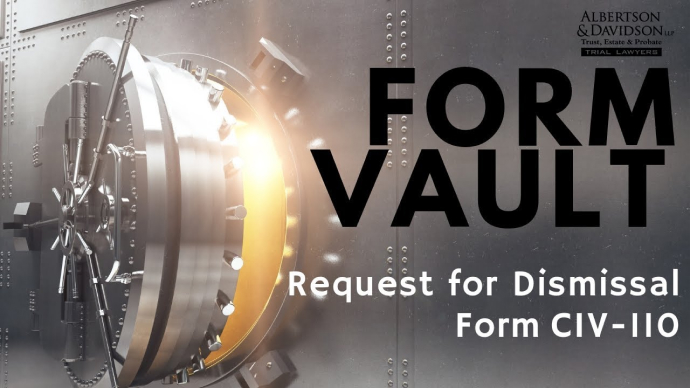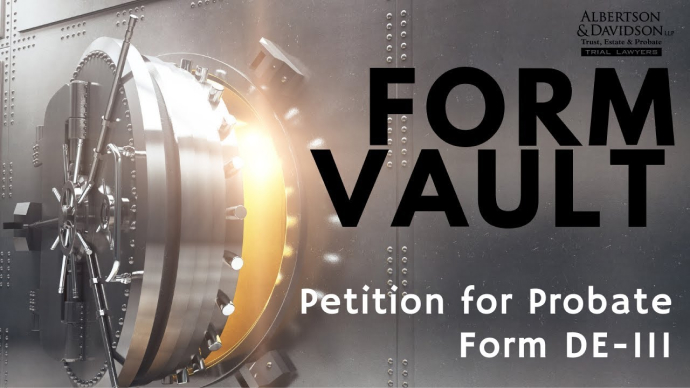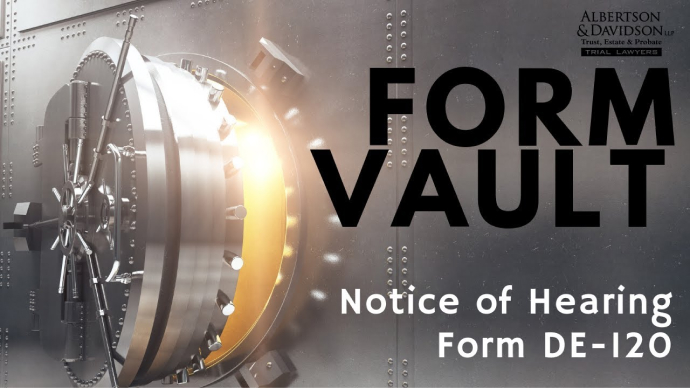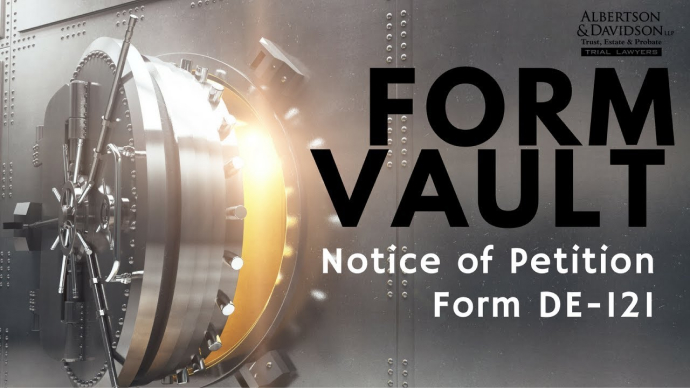Video Transcript
The following is an unedited, verbatim transcript of our video. It is not intended to be a stand-alone article.
Hi, this is Keith Davidson of Albertson & Davidson. Today, we are going over the Request for Dismissal. This is form CIV-110. This is the form that you are going to use to dismiss your lawsuit once you’re done with the lawsuit, once everything is over and either you have a judgement or you reached a settlement, at some point, your case must be dismissed, and this is the form that you are going to use.
CIV-110
We’re going to start off by going to the Judicial Council website just like we always do. And under forms and rules, we’ll browse all the forms, and today, we’re using the civil forms. And anytime you see a form that starts with CIV, you know that you need the civil forms. So we’ll go down to CIV-110 – Requests for Dismissal. Now, the California request for dismissal would be filled out by you if you’re an attorney or even if you’re an attorney, if you’re a party without an attorney, you would just fill out and put your name at the top, just like we do with all of our Judicial Council forms. Since I am an attorney, I’m going to put my state bar number and I’m going to put the name of my firm. You can fill the rest of the information, your address, telephone number, definitely want your email address, and the name of the party that you represent, and we’ll say we represent Nancy Jones. And then the county where your lawsuit is pending, so if you’re in Los Angeles County, you put that. San Diego, Orange County, San Mateo, San Francisco, whatever county you’re in, just put it in there. And then you need to put in the street and mailing address of that court, you can find that information by going to the court’s website and just filling that out. Now, if you watched our video on Notice of Settlement, you’ll know that this line of plaintiffs slash petitioners is the same as the notice of settlement. So we filed the notice of settlement first to notify the court that the case is settled. But now, we’re going to type in here so that the case can be dismissed from court. So we’ll put in the name of the petitioner and the name of the respondent. And then we’re going to make sure that we fill in the case number so that the form can be filed in the proper case number obviously.
Dismissing With or Without Prejudice
Let’s go down to number 1, and this is where the dismissal really happens. So, please dismiss this action as follows. You can either dismiss with prejudice or without prejudice. If you file a dismissal with prejudice, that means that you can never refile the case. It’s as if the case went all the way to judgement and the case is over you can’t refile it, it’s done. If you dismiss your case without prejudice, that means in theory you could refile your case at some point assuming that you’re not beyond the statute of limitations period. Most settlement agreements, have you settled your case, require you to dismiss with prejudice because people don’t want you filing your lawsuit all over again. And so most of the time you’re dismissing with prejudice. But if you want to dismiss your lawsuit because for whatever reason you don’t want to take it forward and you didn’t reach a settlement with the other side and you don’t have a general release, then you probably want to dismiss without prejudice.
Clarifying What to Dismiss
Next, the form wants to know, are you dismissing a complaint or a petition. A complaint is what we use in a civil court for typical civil lawsuits. A petition is what we use for probate court for trust lawsuits. And then you have to list whether there’s any cross-complaint filed. So sometimes you’ll file a lawsuit and somebody else will counter sue you, you have to list that and you have to list the name of each of the cross-complaints, there could be multiple in some cases.
And then number 5 wants to know are you dismissing the entire action of all parties and all causes of actions. So if you check number 5, the entire lawsuit’s over, the whole thing. You can also, under number 6 specify something less than that. So sometimes, parties might just be dismissing one cause of action, not the whole lawsuit. If that’s the case, then you would check other and you can wither explain what you’re dismissing here, or you can just type in “see attached,” and then you can attach something that explains what it is you’re dismissing.
Court Fees
On number 2, you have to say whether the court did or did not waive court fees and costs for a party in this case. Some people get fee waivers if they don’t have enough income, they can file a request for a fee waiver with the court. And then at the bottom here, we’re going to date it, and then we’re going to put the name of the attorney or the party without an attorney, so if you don’t have an attorney, just put your own name. In this case, I’ll put my name, attorney, and I’ll sign it. And then you have to say who you’re the attorney for, we’re the attorney for the plaintiff or petitioner. Now you’ll see down here to the clerk, this says consent to the above dismissals hereby given. So if you have another party who has filed a cross-complaint or counter lawsuit, they also have to file this dismissal, and so you’ll put their information down here, date, the name of that attorney’s name, and then they will also sign it and they will probably be the attorney for the defendant or respondent.
And then this final section is to be completed by the clerk. So this is where the clerk actually enters the dismissal. So either it will be dismissed on a certain date, and the clerk will fill out all of this information for you. You don’t have to, number 4 through 7, you don’t have to do any of that, the clerk will fill that out for you.
And then down below, we have a declaration concerning waived court fees. So the court waived court fees and cost in this action for, and so this is just whether or not somebody had a fee waiver. Again, if that’s the case, then go ahead and fill that out, and that’s what you do. What the court wants to know is, if they gave somebody a fee waiver and that person then recovered money as part of the lawsuit, a part of the settlement, then the court wants them to pay the fees after the fact. So that’s what this declaration is concerning. So if you got a fee waiver, you have to fill it out, if you didn’t get a fee waiver, you don’t have to worry about it, you can just leave it blank. And that’s all there is to it. Once you get this filled out, you will file it with the court and your case number and then the clerk will enter your dismissal, and once that happens, then your case is officially dismissed, your lawsuit is over, and you can go on with the rest of your life.




